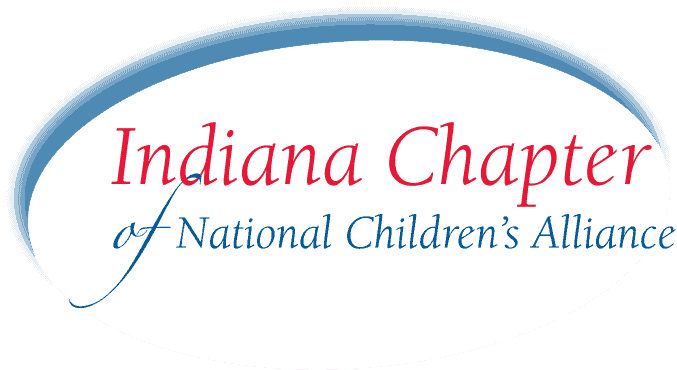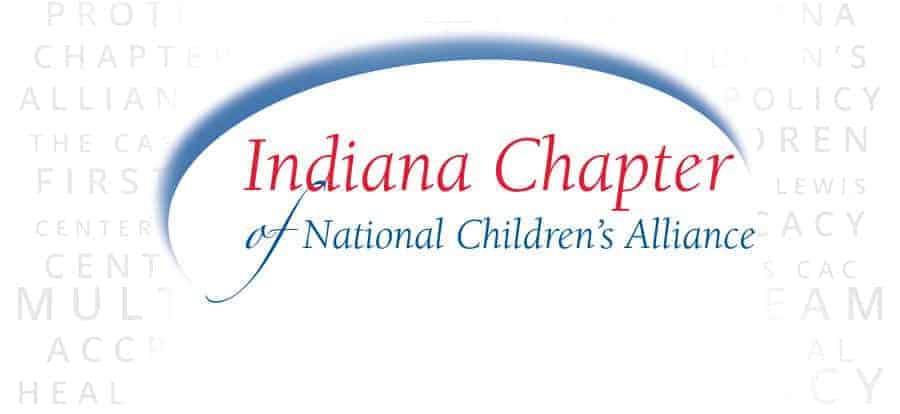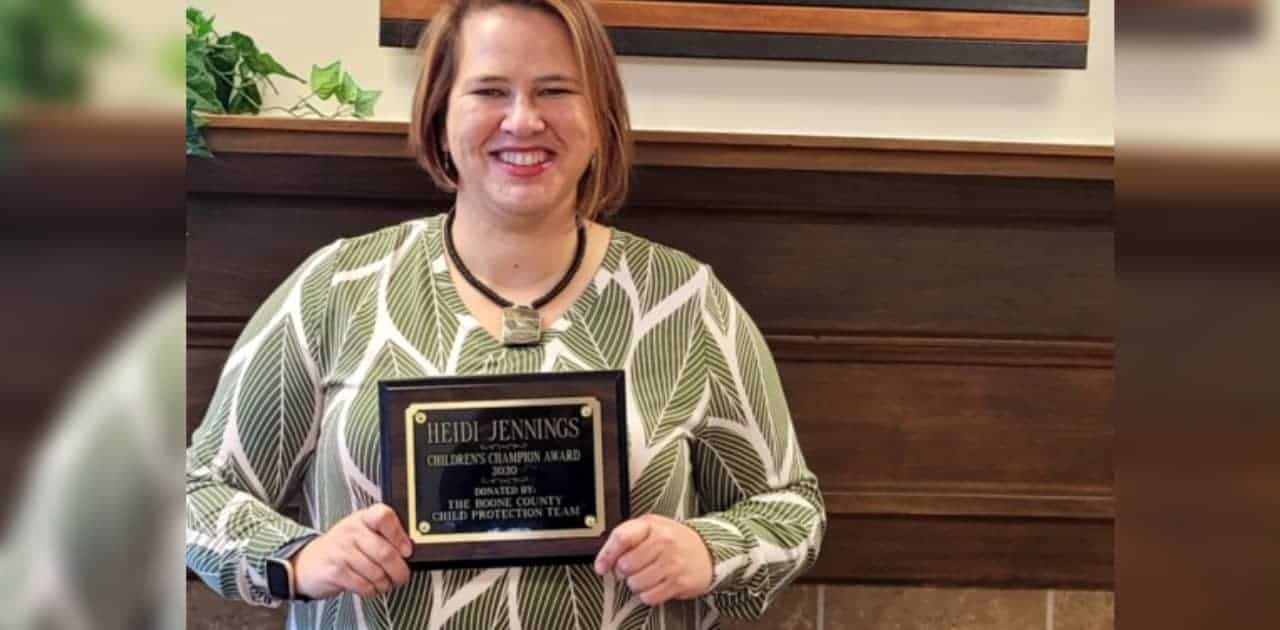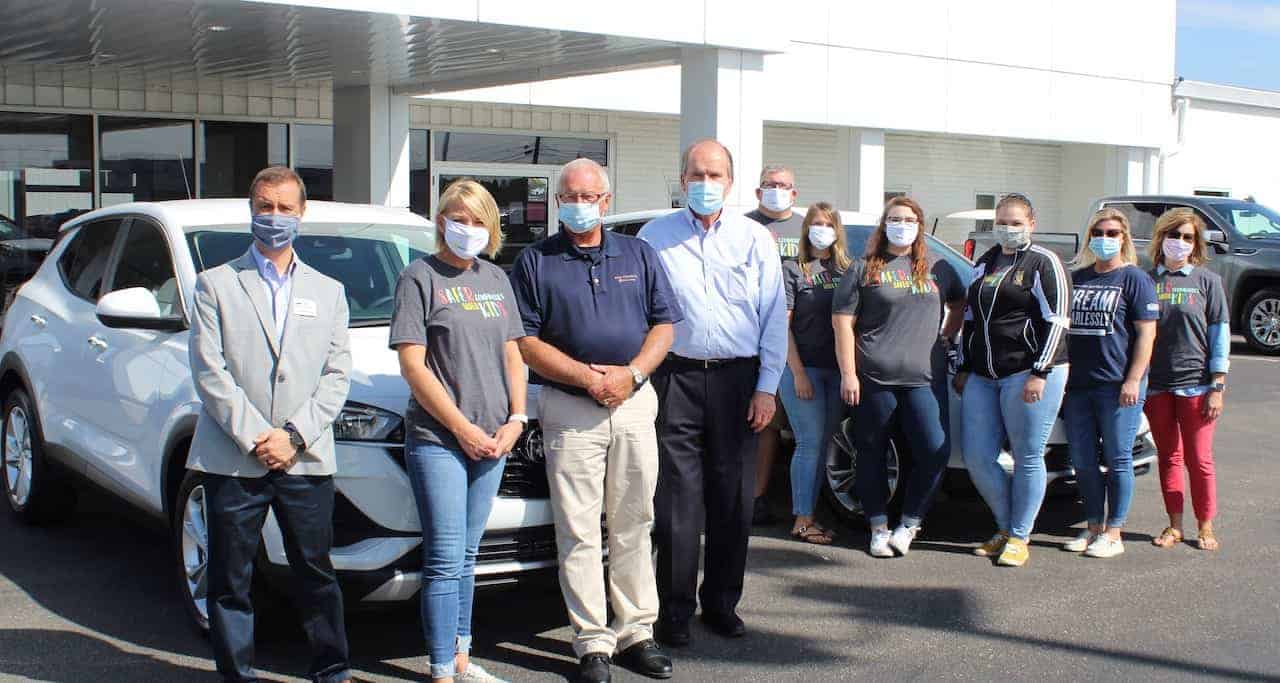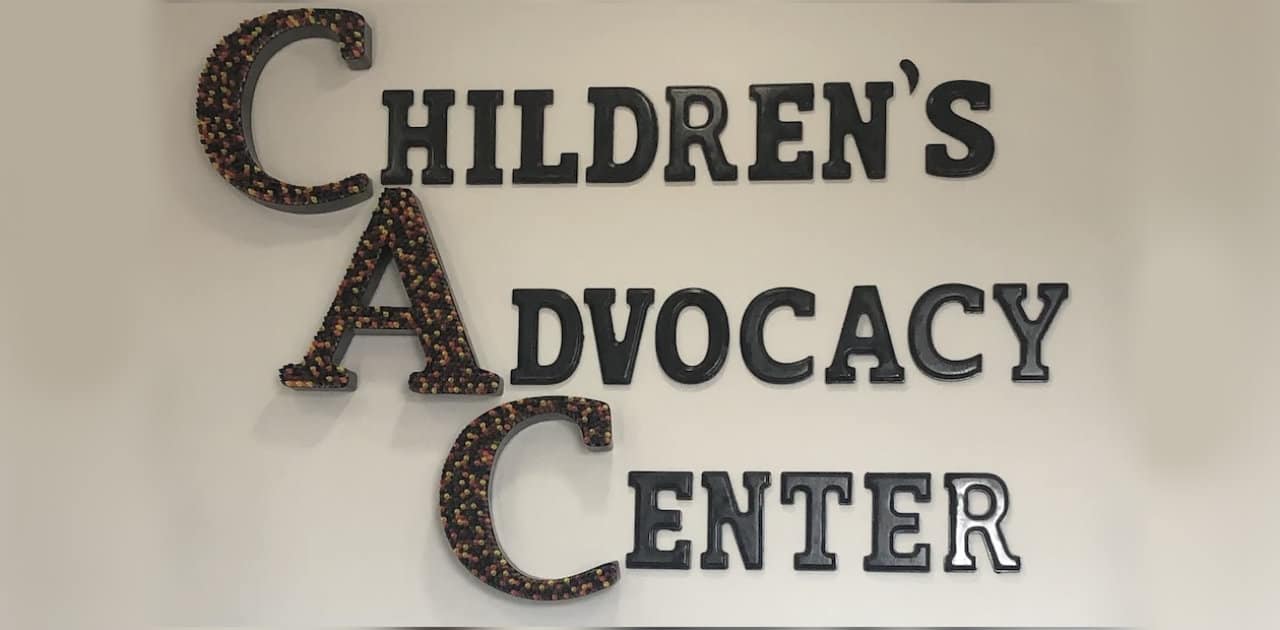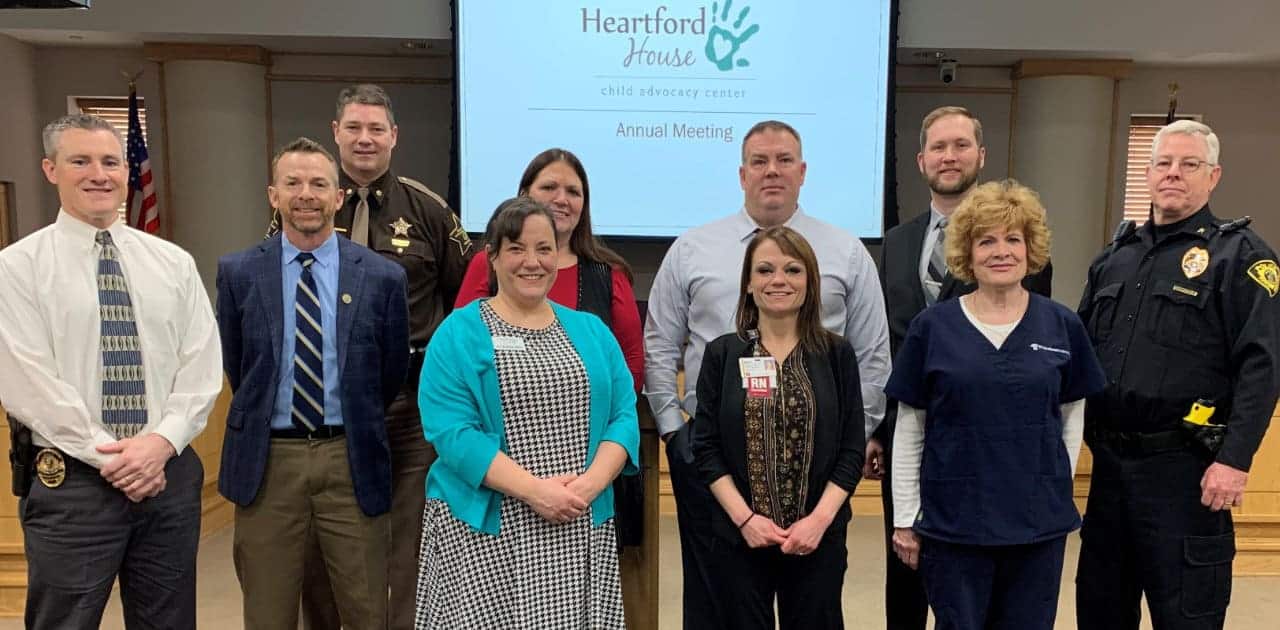Trends and report observations from the height of the pandemic
The Indiana Chapter of the National Children’s Alliance (The Indiana Chapter) is committed to promoting the development, growth, and sustainable continuation of children’s advocacy centers in Indiana through education, training, mentoring, collaboration, advocacy, and development of resources. The Indiana Chapter works to fulfill its mission by ensuring that all children in Indiana of reported abuse will have reasonable access to a full array of child advocacy services.
This report provides an assessment of Indiana so the Indiana Chapter can better serve the children and families of the state of Indiana.
The following report summarizes the activities of the Indiana Chapter in 2020 and 2021. While the Chapter’s annual report is typically reflective of one year, this is a combined report due in part to the Covid-19 pandemic.
Overarching trends
- From 2019 to 2020, the Indiana Department of Child Services saw a 5.58% increase in substantiated reports
- From 2015 to 2019, Indiana CACs have seen an average increase in reports of at least one percent year over year.
- 23.59% of the population of the State of Indiana is under the age of 18.
- 18.48% of the population under age 18 lives in poverty.
Factors related to abuse and maltreatment
There is no single cause of child abuse and maltreatment, and children in any community can be affected. Some factors are considered related factors correlated with child maltreatment reporting at the population level. These factors do not cause or prevent maltreatment but can give insight into the strengths and needs within a community where CACs provide services. This drives the Chapter’s actions to support CACs.
According to the Centers for Disease Control and Prevention (CDC), “A combination of individual, relational, community, and societal factors contribute to the risk of child abuse and neglect. Although children are not responsible for the harm inflicted upon them, certain characteristics have been found to increase their risk of being maltreated. Risk factors are those characteristics associated with child abuse and neglect—they may or may not be direct causes.”
These factors range from individual and familial to socio-economic and environmental, and a complete list of these factors can be found in Appendix A in the printed PDF report available below.
Nationally, the Multidisciplinary Team (MDT) model employed by CACs is considered best practice in providing services to children and families regarding abuse and maltreatment. In Indiana, there are significant opportunities for the growth of this model to serve a larger proportion of those in need of services.
Additional findings of interest in 2020 and 2021 include:
- Three types of cases make up more than 87% of total cases:
- Sexual (about 63%)
- Physical (about 13%)
- Witness to Crime (about 11%)
- Children ages 7-12 were the largest age group interviewed by Indiana CACs.
- Averaging 40% of cases
- On average 67% of cases handled by Indiana CACs involved female children.
Statement on COVID-19
In early 2020, a novel coronavirus began to spread across the United States and reported cases of the disease, known as COVID-19, began to rise. On March 11, the worldwide outbreak of the coronavirus had been classified as a pandemic by the World Health Organization. By the end of March, the Governor of Indiana, Eric Holcomb, issued a ‘stay at home’ order that only allowed essential services and activities to be conducted. As a result, many businesses had to close for a period and unemployment rates began to rise. Schools remained closed for the spring semester, which presented many challenges for children, and families.
The immediate impacts of the pandemic have affected areas of health (physical and mental), education, employment, and housing. They have resulted in adverse changes to the quality of life for many populations. Older populations and individuals with underlying health conditions (e.g., lung disease, asthma, diabetes, cardiovascular disease, immunocompromised conditions) have an increased risk of contracting and experiencing complications caused by COVID-19. Additionally, social inequities have caused racial and ethnic minority groups to be disproportionately affected by COVID-19. Rural counties have been considered more susceptible to COVID-19 due to the presence of an older population, the shortage of health professionals, and higher rates of uninsured individuals.
The effect this has on Child Advocacy Center’s is still clear in the reduced cases seen at CACs during 2020 and 2021. This is also in part due to schools being closed or on virtual learning, which likely affected how many reports were made to DCS regarding child welfare.
DCS caseload statistics and Indiana child abuse case types
Indiana CACs handled 8,383 cases in 2020 and 9,603 in 2021. The breakdown of case types is seen in the below graphs and demonstrates that even with the decrease in caseload due to Covid-19, the CACs see relatively the same mix of case types year over year. Due to the nature of the cases CACs assist with, note that some cases are categorized under more than one case type. As case tracking becomes more sophisticated, the amount of detail captured regarding case type is improving and becoming more precise.
DCS Reports
Case Types in 2020
Case Types in 2021
Language and nativity
Forty-two languages are spoken in the state, with English being the primary language. The other common languages spoken are: Spanish, Yiddish, Pennsylvania Dutch, German, Chinese, French, and Arabic. However, language prevalence varies widely throughout the state, and some languages are more prominent than others depending on the county, so reviewing local language data is essential.
The American Community Survey (ACS) provides an estimate of English language proficiency. The ACS estimates that of the total population of 6,247,018, age 5+, 202,620 of the entire state population is of limited English proficiency. This represents 3.24% of the population.

Indiana Chapter Organizational Capacity
Membership
The Indiana Chapter works diligently to source trainings that meet the needs of the CAC members and their MDT’s. Trainings are offered throughout the year and are funded in part by the National Children’s Alliance and other sources. Continued education for members of MDTs and CAC staff is the best way for Indiana CACs to provide evidence-based, world-leading service.
Growth and development
- Zoey’s Place in Hancock County, the Child Advocacy Center of Randolph County, and Safe Harbor in Kosciusko County all opened in 2020; Zoey’s Place in December and the other two in November.
- In October 2020 CAC of Southeast Indiana opened their satellite office in Decatur County.
- Sylvia’s CAC became a National Children’s Alliance accredited center in 2021.
- Additionally, In 2021 5 Child Advocacy Centers – Cherish CAC, Kids Talk, McKenzie’s Hope, Susie’s Place Avon and Susie’s Place Bloomington began preparation for and received NCA reaccreditation in 2022.
- Two centers, Susie’s Place Terre Haute and Dunebrook CACs began preparation for accreditation with the National Children’s Alliance in 2021.
Training and technical assistance
The Indiana Chapter works diligently to source trainings that meet the needs of the CAC members and their MDT’s. Trainings are offered throughout the year.
2020 Trainings
- Director’s Round Table 02.25.2020
- Prevention Programming 02.27.2022
- Forensic Interviewing – Interviewing Children of Alleged Physical Abuse 04.03.2020
- Victim Advocate Round Table – 04.13.2020
- New Director Orientation – 04.16.2020
- Forensic Interviewing – Interviewing Young Children 04.23.2020
- Forensic Interviewing – Overcoming difficult Situations in Your Forensic Interview 05.22.2020
- Holistic Approach to Victim Advocacy – 05.28.2020
Statewide MDT Training: Utilizing Language Interpretation in Child Abuse Interviews – 08.14.20 - Statewide Forensic Interviewer Peer Review – 08.17.2020
- Statewide MDT Training: Victim Advocacy Round Table – 08.26.2020
- Victim Advocate Round Table, “Who Is My Client?” – 10.29.2020
- Forensic Interviewing – Interviewing Children with Disabilities 11.05.2020
- Forensic Interviewing – Problem Solving – Q&A with ZAP – 12.07.2020
2021 Trainings
- First Witness – Victim Advocacy – 3 Day Training – March 8, 9, 10
- Building Resiliency Training at your CAC – March
- Forensic Interviewer Peer Review
- ZAP Training: MDT team members supporting and serving LGBTQIA+ children and families. May 21, 9 am – 11 am
- NCA Leadership Conference – June 7, 8, 9
- Expanded Forensic Interviewer Training – 2.5 days – July 26, 27, 28 (18 Students)
- ChildFirst Protocol One Day Refresher Course for all trained in Finding Words/ChildFirst 08.31.2021
- Q & A for Forensic Interviewers with Zap – Rita Farrell, November 2, 2021
Awareness and education
The Indiana Chapter works diligently to bring awareness of the CAC/MDT model. The Chapter’s awareness and education outreach online expanded significantly, including an average of about 1,000 visitors per month. Additional outreach included work as or with:
- MRCAC Advisory Board
- NCA Site Reviewer
- NCA Accreditation Revision Facilitator – 2023 Edition of NCA Standards
- NCA Chapter Work Group, Member
- NCA Chapter Networking Group, Member
- CJA Advisory Committee, Member
- Liaison to DCS for CACs
- Liaison to IPAC for CACs
- Liaison to ICJI/VOCA for CACs
- Governor’s Taskforce – Juvenile Justice State Advisory Group, Member, 2017
- Victim Assistance Training Project, Steering Committee, Member, 2019
- Member of Statewide SART Team, Member, 2020
How are CACs reviewed?
CACs that are members of the National Children’s Alliance have access to use the Outcome Management System, an evidence-based survey CACs can use to measure their own performance and benchmark themselves against the field.
Initial caregiver survey
- Offered to families at the end of their first visit to the Center or within approximately 10 days of that visit to gauge initial reaction to the center and the services offered during that first visit
- There have been 2,428 responses since January 1, 2020 – December 31, 2021, representing approximately 15% of the interviews completed at Indiana CACs.
- 86.3% of respondents state that they strongly agree that they believe their child felt safe at the center, and 9.7% of respondents say they somewhat agree that they believe their child felt safe at the center.
- 98.8% of respondents state the CAC staff made sure they understood the reason for the visit.
- Many respondents (parents or caregivers) took the time to write in the services they want to receive post-initial visit were mental health (counseling) services for their child and also for themselves.
Follow-up survey
- Offered approximately two months after the first visit. Timing may be flexible on when this survey is offered based on the center’s follow-up procedures. This survey gives a chance for families to reflect on their experience with the center and any follow-up services they may have received since the first visit.
- There have been 138 responses between January 1, 2020 – December 31, 2021, which represents approximately 1.1% of the interviews completed at Indiana CACs.
- Of the 138 responses, only 42.7% of respondents stated that they used the therapy/counseling services that were referred for their child during the initial CAC visit.
- Of the 57.3% that did not use the services did not use referral services, the majority state that they:
- already used a similar service
- were unable to find a provider accepting new clients/patients
- did not believe their child needed the services referred
- Of the 57.3% that did not use the services did not use referral services, the majority state that they:
- Of the 138 responses, only 21.1% of respondents stated that they used the therapy/counseling services that were referred for themselves during the initial CAC visit.
- Of the 78.9% that did not use any mental health referrals for themselves, the majority stated:
- They did not need mental health services
- 25% were already receiving services, so no referral was needed
- 22.7% stated they did not have time or had not made an initial appointment yet.
- Of the 78.9% that did not use any mental health referrals for themselves, the majority stated:
Youth survey
- The newest survey added to the OMS offerings. Offered to youth ages 10 – 17 and allowing youth an opportunity to share feedback on their experience at the center.
- This survey launched in 2021 and has 81 responses.
- 84.42% of the respondents stated that they felt CAC staff were good at listening to them
- 81.33% of the respondents stated that their questions were answered
- 94.67% of the respondents stated that they felt safe at the center
- 80% of the respondents stated that they felt like CAC staff cared for them
MDT survey
- Offered to all team members involved in the CAC/MDT process. This survey is offered on a flexible basis, most often annually or semi-annually.
- Between January 1, 2020 – December 31, 2021, 268 surveys have been completed.
- The majority of responses show that the CAC model is respected and fosters collaboration.
- However the responses do show room for improvement on allowing each MDT member to have a voice and be heard during the forensic interview process.
- Also opportunity for increased collaboration and consistency with how MDT members are communicated with.
News and updates from 2020 and 2021
Sources and data used in this report
- Indiana Chapter of the National Children’s Alliance. Caseload Data 2005-2020.
- Discounting the affects Covid-19 had on CAC operations
- Data Source: US Census Bureau, American Community Survey. 2015‐19. Source geography: Tract
- Data Source: US Census Bureau, American Community Survey. 2015‐19. Source geography: Tract
- Centers for Disease Control and Prevention. “Child Abuse and Neglect: Risk and Protective Factors.” https://www.cdc.gov/violenceprevention/childabuseandneglect/riskprotectivefactors.html. Accessed August 3, 2021.
- https://www.nationalchildrensalliance.org/oms-outcome-measurement-system-methodology/
- From data collected from January 1, 2019 to September 18, 2021
- Outcome Management System
- The Indiana Department of Child Services
- The Indiana Chapter of the National Children’s Alliance
